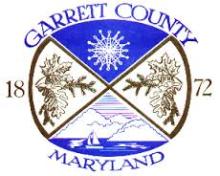Garrett County, Maryland: Access For Anchors In The Appalachians
Garrett County is the westernmost county in Maryland. High in the Allegheny Mountains of the Appalachian Mountain Range; winters are harsh and forest covers 90 percent of the county. Before the county deployed a fiber-optic network, high-quality connectivity was hard to come by for schools, libraries, and other community anchor institutions. By making the most of every opportunity, Garrett County has improved efficiencies for the many small communities in the region and set the stage to improve connectivity for businesses and residents.
Rural, Remote, Ready For Better Connectivity
The county is more than 650 square miles but there are no large urban centers and over time a number of sparsely populated areas have developed as home to the county's 30,000 people; since 2000, population growth has stagnated. Many of the tiny communities where businesses and residents have clustered are remote and do not have public sewer or water. These places tend to have a high number of low-income people.
Unemployment rates are volatile in Garrett County, fluctuating with natural resources extraction industries. As the coal and lumber industries have waned, many jobs in Garrett County have disappeared. Garrett County Memorial Hospital and Beitzel industrial construction employ over 300 people and are the county’s largest employers.
All of these characteristics make Garrett County unattractive to the large Internet Service Providers (ISPs) that want to maximize investment and focus only on densely populated urban areas. Verizon offers DSL and Comcast offers cable in limited areas but many people rely on mobile Internet access and expensive satellite Internet access.
It Started With BTOP Fiber

In 2010, the State of Maryland received over $115 million in grant funding through the Broadband Technologies Opportunities Program (BTOP). With a matching $43 million from state and in-kind contributions, Maryland deployed the One Maryland Broadband Network (OMBN). In August 2013, the middle mile fiber-optic network was complete, stretching 1,324 miles across the state connecting 1,068 CAIs.



